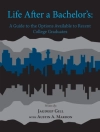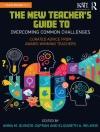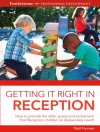Using a lively narrative, The Sociology of Religion is an insightful text that investigates the facts of religion in all its great diversity, including its practices and beliefs, and then analyzes actual examples of religious developments using relevant conceptual frameworks. As a result, students actively engage in the discovery, learning, and analytical processes as they progress through the text.
Organized around essential topics and real-life issues, this unique text examines religion both as an object of sociological analysis as well as a device for seeking personal meaning in life. The book provides sociological perspectives on religion while introducing students to relevant research from interdisciplinary scholarship. Sidebar features and photographs of religious figures bring the text to life for readers.
Key Features
- Uses substantive and truly contemporary real-life religious issues of current interest to engage the reader in a way few other texts do
- Combines theory with empirical examples drawn from the United States and around the world, emphasizing a critical and analytical perspective that encourages better understanding of the material presented
- Features discussions of emergent religions, consumerism, and the link between religion, sports, and other forms of popular culture
- Draws upon interdisciplinary literature, helping students appreciate the contributions of other disciplines while primarily developing an understanding of the sociology of religion
Accompanied by High-Quality Ancillaries!
Instructor Resources on CD contain chapter outlines, summaries, multiple-choice questions, essay questions, and short answer questions as well as illustrations from the book. C
Intended Audience
This core text is designed for upper-level undergraduate students of Sociology of Religion or Religion and Politics.
Tabla de materias
Chapter 1 Theory
Sociological Theory and Religion
Death and the Meaning of Life
Classical Theory
Emile Durkheim
Karl Marx
Max Weber
The Protestant Ethic and the Rise of Capitalism
Charisma
Of Priests and Prophets—Establishment versus Charisma
Middle Sociology—World War II and its Aftermath
Race: The Great Religious Divider in the United States
The Evil Enemy
Women as Other
Religion after World War II
Theory and Religion Today
References and Further Reading
Chapter 2—A Sociological History of Religion
Section i ?Premodern Religion
The Dawn of Religion
Social Change and two Great Shifts
Polytheism
Inclusive Monotheism (Henotheism)
Exclusive Monotheism
Transition from Paganism to Christianity
What Happened to Paganism?
The Role of Class
The Role of Culture
The Engines of Religious Change
The Medieval Period
Schism and Crusades
Early Modern Period
The Witch Craze
Rise and Transformation of the Work Ethic
Section ii. Religion in Modern Times
Modern Times
Vital Religious Experience and Personal Volition: The First and Second Great Awakenings
Religion and Race: Slavery and Its Aftermath
American Evangelicalism
The Rise of Progressivism and Fundamentalism
Religion and the Rise of Modern Manhood
Progressivism
American Innovation: The Democratization of Religion
The Twentieth Century
Civil Rights and the Vietnam War
Fundamentalist Resurgence
Religion after the Cold War
Religion Today and in the Near Future
References
Chapter 3 Superstition and the Supernatural
Introduction
Sparta and Athens
The Virgin Mary in a Small German Village
Witches and the Devil in Salem
Discussion
References
Chapter 4 Alternative Religion
Introduction
Analytical Concepts
On the Ambiguity, Ambivalence, and Vacancy of the Self in Modern Life
Conformity—The Case of the Latter-day Churches
Innovation—The Case of Unitarian Universalism
Ritualism—The Case of Roman Catholic Traditionalism
Retreatism—Voudou in the New World
Caribbean Variations
Cuba
Haiti
Revolution—The Case of Native-American Resistance
References and Further Reading
Chapter 5 Religious Intolerance and Violence
Introduction
Exclusive Monotheism
Icons—Intolerance of Religious Imagery
The Cathars—Intolerance of Heresy
Discussion
Violence and Intolerance in Modern Times
Fundamentalism
Islam
Women’s Fundamentalism in the Middle East
Christianity
Fundamentalism in the US—The Christian Right
Christian Violence
Hinduism
Discussion
Authoritarianism
Conclusions
References
Chapter 6 Evil
Sociological Relevance
Evil Around the World
Polynesia
Vedism
China and Japan
Native America
The Persians
Co-Discussion—“Gods and Devils” by Mark P. Worrell
References and Further Reading
Chapter 7 Cults
Introduction
Millerites
Branch Davidians—From Alternative Religion to Cult
Charles Manson and the Family
Degradation Rituals—The Process of Cult Initiation
The Leader and the Message
Heaven’s Gate
Discussion—What Cults Really Are
References and Further Reading
Chapter 8 Emergent Religion
Introduction
Revival and Emergence
Neopaganism
Beliefs and History
Margot Adler
Starhawk
Ethnographic Testimonies—Original Research
New Evangelicalism
Comparisons
The Differences
References and Further Reading
Chapter 9 Globalization
Introduction
Haré Krishna—Indian Religion Arrives in the US
Pentecostalism
Roman Catholicism
Global Clashes—Russia
Poland
Co-Discussion—Catholic Fundamentalism in Poland by Agnieszka Koscianska
Co-Discussion—’I’m Muslim by God’s Grace; I’m Gay by God’s Grace”: Reconciling a Queer Muslim Identity in America by Mahruq Khan
Types of Religious Experience
References and Further Reading
Chapter 10 Religion Beyond Religion
Introduction
Heavy Metal Hierophany
On the Road—A Journey of Discovery
Metal and Goths—Contrasts
Sports
Branding
Jesus, CEO
Co-Discussion—God the Economist? Economics and Religion in an Inter-Faith Business Organization by Sadie Pendaz
References and Further Reading
Sobre el autor
George Lundskow recently edited and published a book on new developments in religion. This textbook is in many ways an extension of that book conceptually, that religion today is best understood through example, examined closely, not through summaries of classical theorists, literature reviews of famous scholars, or abstract concepts. Rather, let’s present students with interesting, factual information, relevant concepts, and let them critically analyze what is happening and why.












